9 Best PC Cases in 2023, So Far
Lots of new PC cases are already released in the first quarter of 2021. So, we’re updating our best PC cases list “so far,” and we’ll again update by the end of the year.
The case market changes rapidly because prices move around depending on things like tariffs. In the last few months alone, the prices have fluctuated, so we had to change some of our recommendations in the previous best cases list, and we also have many new cases to consider.
To make things easier for you, we have created different categories like best airflow, best overall thermals, best in general, best mechanical, and few others. This will help you choose a PC case according to your requirements.
The industry has gotten over its initial obsession with tempered glass and blocking every single intake spot on the cases.
There are actual advancements in case technology, and we have plenty of good options available in the market with good airflow, tempered glass, and some RGB.








Best Overall – Two Options
Cooler Master Cosmos C700P
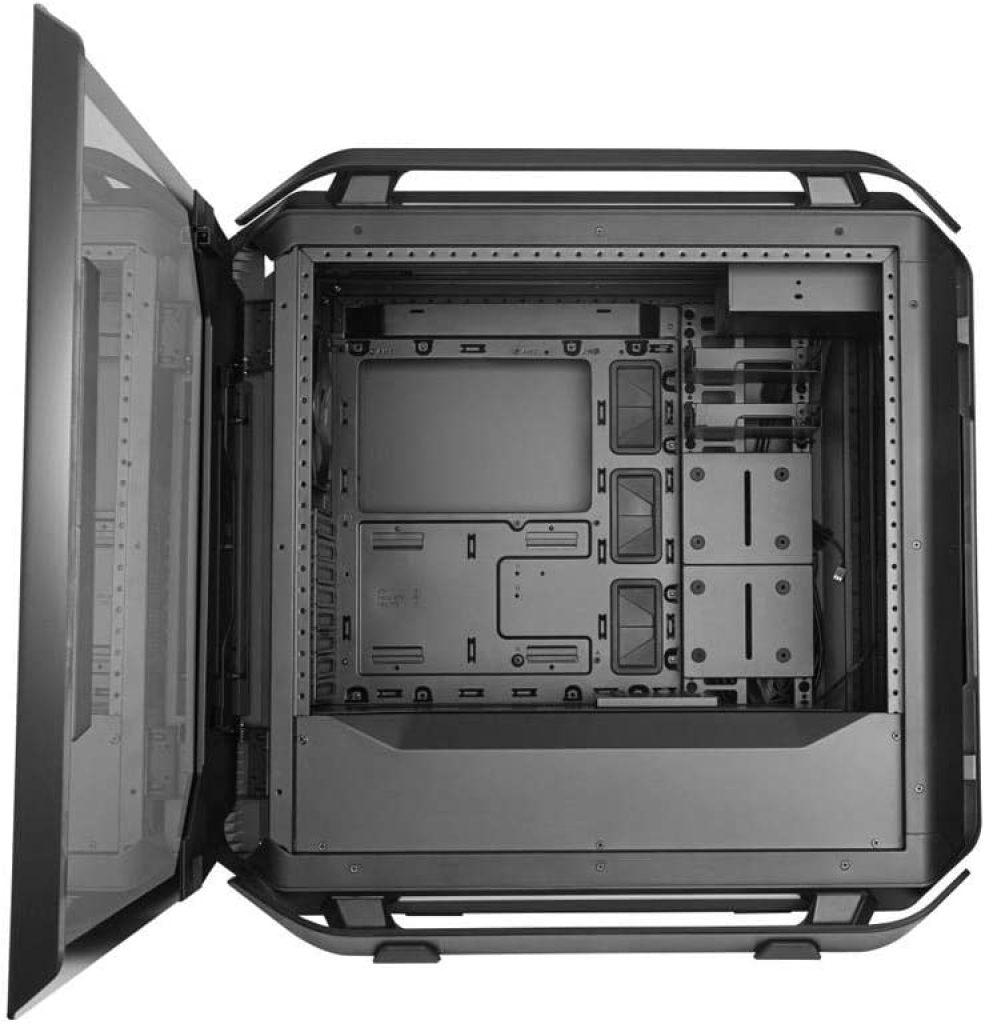

Cooler Master’s Cosmos C700P is a high-end case for custom PC configurations, offering great flexibility and quality to builders. However, the as-delivered performance is mediocre, and the price is high, which makes the stock configuration hard to recommend.
The case is labeled as XL-ATX but has been modified to fit EATX motherboards up to 12” x 10.6”. It is classified as an ATX full tower to make things simpler for buyers who do not know what their 10.6” boards will fit.
The Cosmos C700P is made using innovative manufacturing techniques, with tubular rails replaced by castings and a curved tempered-glass side panel. RGB lighting is included on white stripes on the top panel, lower rails, and port section.
The front panel features a single USB 3.1 Gen 2 port, four USB 3.0 ports, headphone and mic jacks, power and reset buttons, and fan speed and RGB mode selectors. A front-pull bottom filter has been included, and the case is fully modular.
The interior of the case includes several modular brackets running vertically to support drive and motherboard trays. The case only includes two drive trays, but up to 13 could be supported. Two 2.5” trays are mounted on the back of the motherboard tray, and a custom controller for lights and fans is also included.
Two triple-fan brackets are located behind the front intake panel and under the vented top panel. The case is modular, so this fan bracket can also be moved to the bottom panel if desired.
Overall, the Cooler Master Cosmos C700P is an excellent case for high-end custom PC configurations, although the high price and mediocre as-delivered performance may be a deterrent for some.
Lian Li Lancool 215
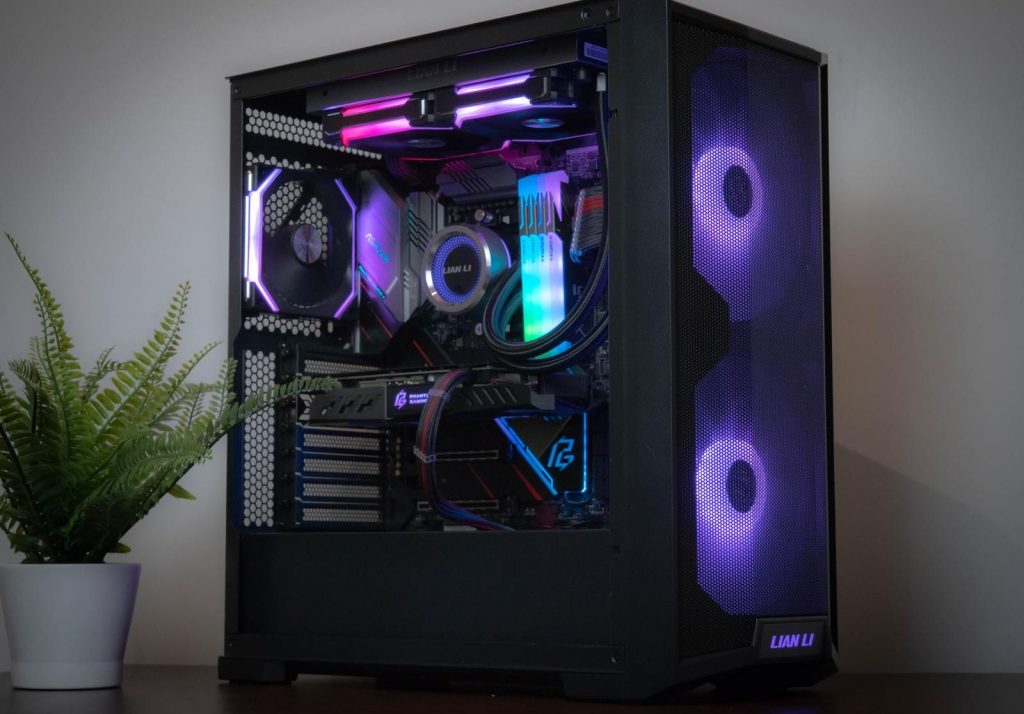
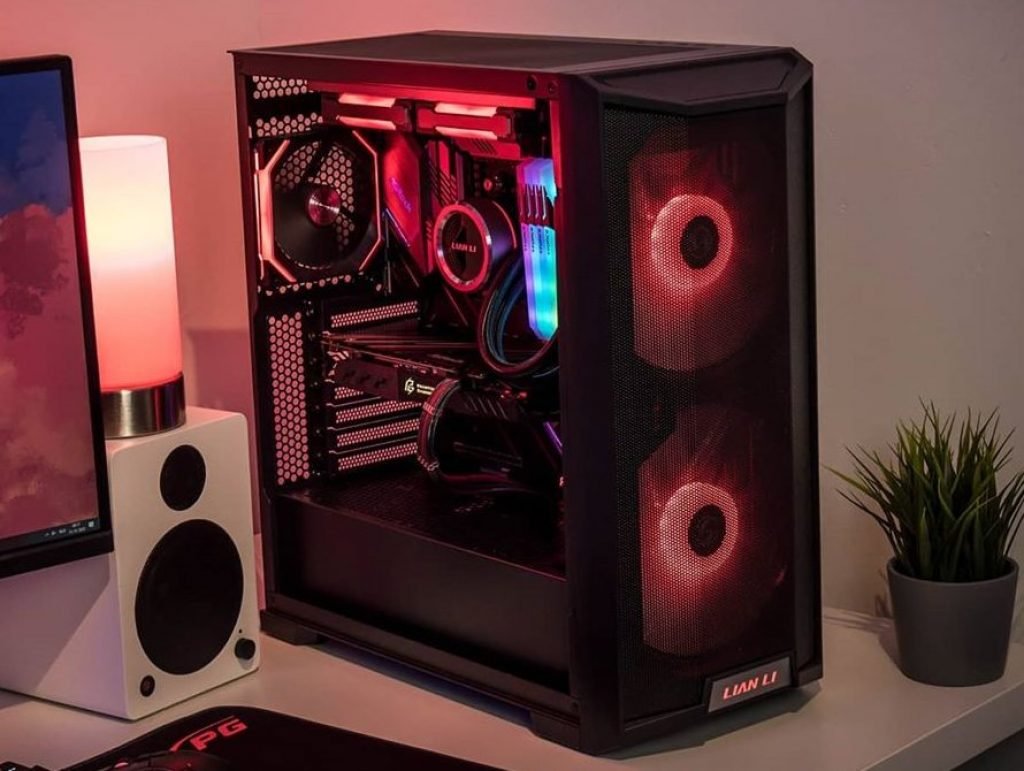
Lian Li Lancool 215 is the best PC case in our overall case category. This case has the best combination of impressive design, thermal performance, build quality, acoustics, and usefulness.
We had Lancool 215 as the best overall case for 2020, and about five months into 2021, our minds haven’t been changed despite the huge amount of cases we tested.
The 215 isn’t the fanciest case, or the most dustproof, or the absolute best at cooling, but it’s a jack of all trades with a great price. After its launch, we were neutral to positive, but after some time, we were mostly positive towards the case.
This case manages to combine powerful thermal performance with a reasonable price for most mid-range and better system builds. It also offers modern ease of installation features and kills management features.
The case, like most cases, isn’t without its flaws. The large intake fans, for example, are partially blocked by the chassis, which is silly and kind of oversight. But it’s a combination of that design oversight and frankly repurposing existing tooling from a third-party supplier to keep the costs down.
The 200mm fans were selected over better fitting 140mm fans for appearance reasons rather than for performance. But despite that, the thermal results are excellent thanks to the relatively open front panel design.
This case is not expensive, and it’s not particularly cheap either and includes enough stock fans to provide great cooling without any extra purchases.
We recommend the 215 for budget or mid-range air-cooled builds, but less so for other setups. Liquid-cooled builds with front-mounted radiators shouldn’t use the 200mm fans alone to cool the radiator.
Using the average radiator fans in a push-pull configuration alongside the 200’s makes it redundant, and you might end up in a worse situation because of the low static pressure of the 200mm fan.
The point at which the stock fans are being used purely for decoration is why you should buy a different case.
In air-cooled systems, this case makes a lot of sense, but it fades with water. Also, for true budget machines, the 80 dollars price tag might push it out of reason, but we have other cases for your consideration and lower price classes later.
Best Mechanical Design – Two Options
In this category, we judge cases based on materials and the execution of interesting features, particularly the mechanical ones. These cases are high quality in ways that aren’t necessarily directly reflected in performance benchmarks.
We have two entries for this one the and the be quiet! Silent Base 802. We are ultimately going to give this award to the be quiet! Silent Base 802, but we’ll talk about the 5000D airflow first.
Be Quite! Silent Base 802


Our first choice for the best mechanical case is the Silent Base 802. The swappable front and top panels are a huge step forward for Be Quiet! Because they have been resistant to any kind of change over the last several years
Be Quiet! is moving forward with new design ideas, executing them in unique ways, and don’t look like it’s a general copy or piling on a trend.
Spring-loaded side panel latches that work unlike some of the other ones we’ve seen in the past is another cool mechanical feature. There’s also a general feeling of quality in the case as you work with the individual components.
For example, the top tray is particularly well built, and the way front panel slides and sockets into place very securely is another good feeling of the mechanical feature.
Be Quiet! routinely impresses us with small details in its cases, especially in the mid-range and high-end pure bass and dark-based families.
For example, the top fan tray in the 802 slides out like a drawer on plastic runners requiring multiple parts and extra labor to assemble, where another company would cut corners and screw the tray into the top of the chassis or maybe not even include a removable tray at all.
This is also an invertible chassis which means that mechanically it’s unique, and it gives you a way to differentiate your build. And if you keep your build on the left side of your desk, you can orient it so that you can still see the components on the right side or vice versa.
Inverting the motherboard tray isn’t a quick process, but Be Quiet! has made it a lot easier than it was for the Dark Base PRO 900, and it’s something that one person can achieve now.
For more simple designs like, check out Best Minimalist PC Cases
Corsair 5000D Airflow


The Corsair 5000D, 5000D airflow, and 5000X, to a certain degree, are collectively a follow-up to the 4000D that we considered for best mechanical design last year, but it didn’t win.
To be clear, the 5000 series is not replacing the 4000 series, and 5000 families exist side by side, with the 4000D cases running cheaper and slightly smaller.
The 5000D airflow wasn’t a chart-topper for thermal performance, but it held its own, and the non-airflow model wasn’t an unbreathable GPU fish tank either.
Easy to use tool-less snaps, captive thumb screws, well-placed Velcro straps, and a removable front radiator makes up for a pleasant building experience.
Corsair did an excellent job by putting protective stickers around all the snaps to prevent paint scuffing as they slide against each other.
We do have some issues with the design, notably the metal plate in the case interior that covers the cable grommets next to the motherboard is restrictive and mutually exclusive with the side radiator mount.
Neither are super convenient to remove, but users should remove one or the other in nearly every situation. That said, we still think the issues are an indirect result of what is ultimately a set of good mechanical design choices.
The case has a removable cable cover, and it has a side radiator mount that is usable thanks to the shortened PSU shroud, which has two optional plastic extensions shipped with the case.
The side mount has a removable mesh filter that locks into place on the side panel and lines up precisely with patterning punched into the steel side panel. The front mount is improved over the 4000D, and it’s both sturdier and has wider fan cutouts which line up better with 140mm fans.
Together all these physical improvements put Corsair in the running.
Best Budget Cases – Two Options
We generally aim for cases around 50 dollars for the budget cases category. The definition of the word budget is different for everyone but ours is set at $55 plus or minus a bit.
Most cases below the $50 mark either have temporary rebates or drop far enough in quality that they become flimsy disposable junk rather than something that can get a few uses out of it.
We’d rather encourage spending an extra $10 on this particular category to be able to reuse the case again later, rather than just throwing it out and creating more e-waste because you spent $35 or $40 bucks on something that wasn’t very good.
Phanteks P360A & Phanteks P300A

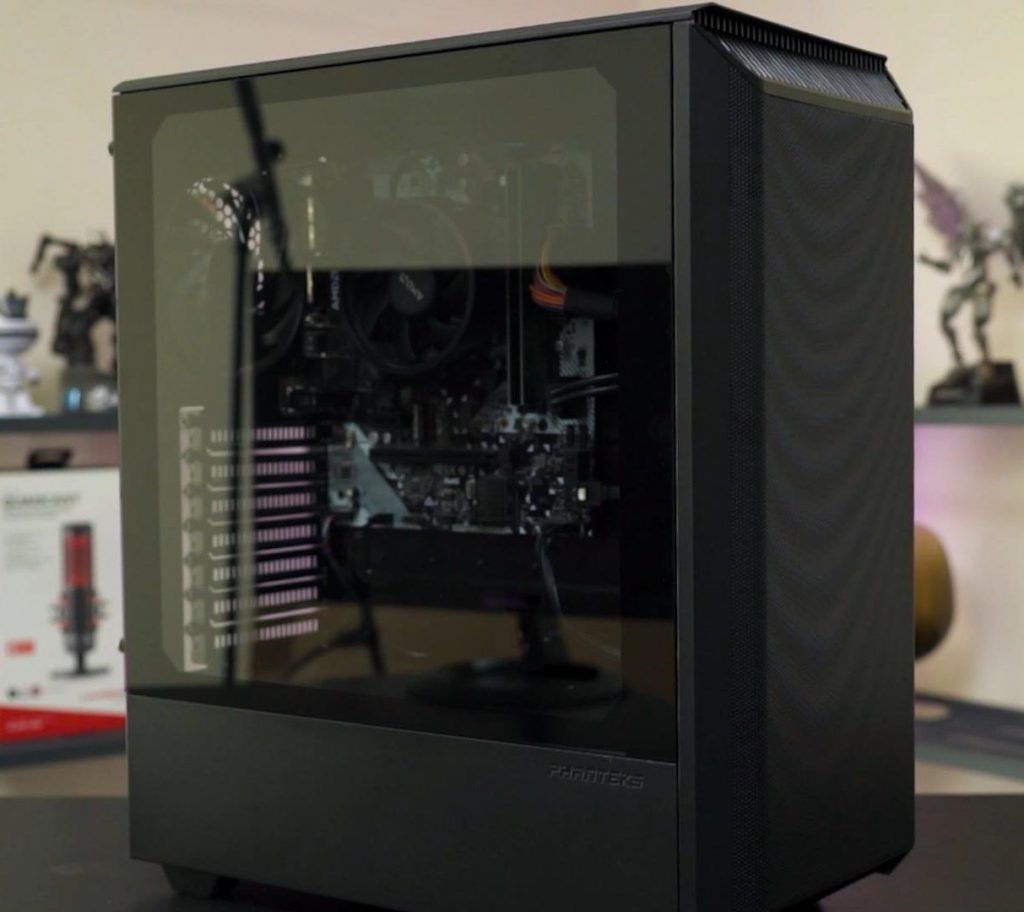
This case is a little more expensive than the usual candidates for this category. It is quite similar to the P400A. Part of the reason we liked the P400A is that the digital RGB variant ships with three fans.
The P360A ships with only two 120mm fans, but Phanteks sells it for a bit less. For comparison, the P300A comes with one non-RGB 120mm fan. Once you add a fan to that case, it costs the same or more.
The P360A fits into a very narrow niche between the P300A and the non-digital P400A, but it does fit. The P360A seems similar to the P300A outside of the stock fans, but we will reserve judgment on just how similar until we do a separate piece.
The most important thing to note is that P360A will need one additional fan installed to truly excel at thermal performance, but so does the non-digital P400A.
If you’re using a cheaper system with low power consumption, the P360A will be fine for those TDP systems.
This is a volatile case category due to the price changes and the frequent sales, so we expect plenty of challengers to the P360A to pop up before the end of the year.
Read PC cases under $50 for more budget options.
Best Thermals and Airflow Case 2021 – Two Options
This category is based on out-of-the-box thermals and is one of the simplest and longest-standing categories we judge. Thermals and airflow are the main things we test in this category.
In the eternal balancing act between selling more expensive cases with more fans versus selling less expensive cases with fewer fans, we typically prefer more fans except in special scenarios.
Users may swap them out, but case manufacturers can get better bulk deals on case fans than individual consumers can, which helps out a lot when pricing out more budget-focused builds.
Fractal Meshify 2 Compact & Lian Li Lancool II Mesh
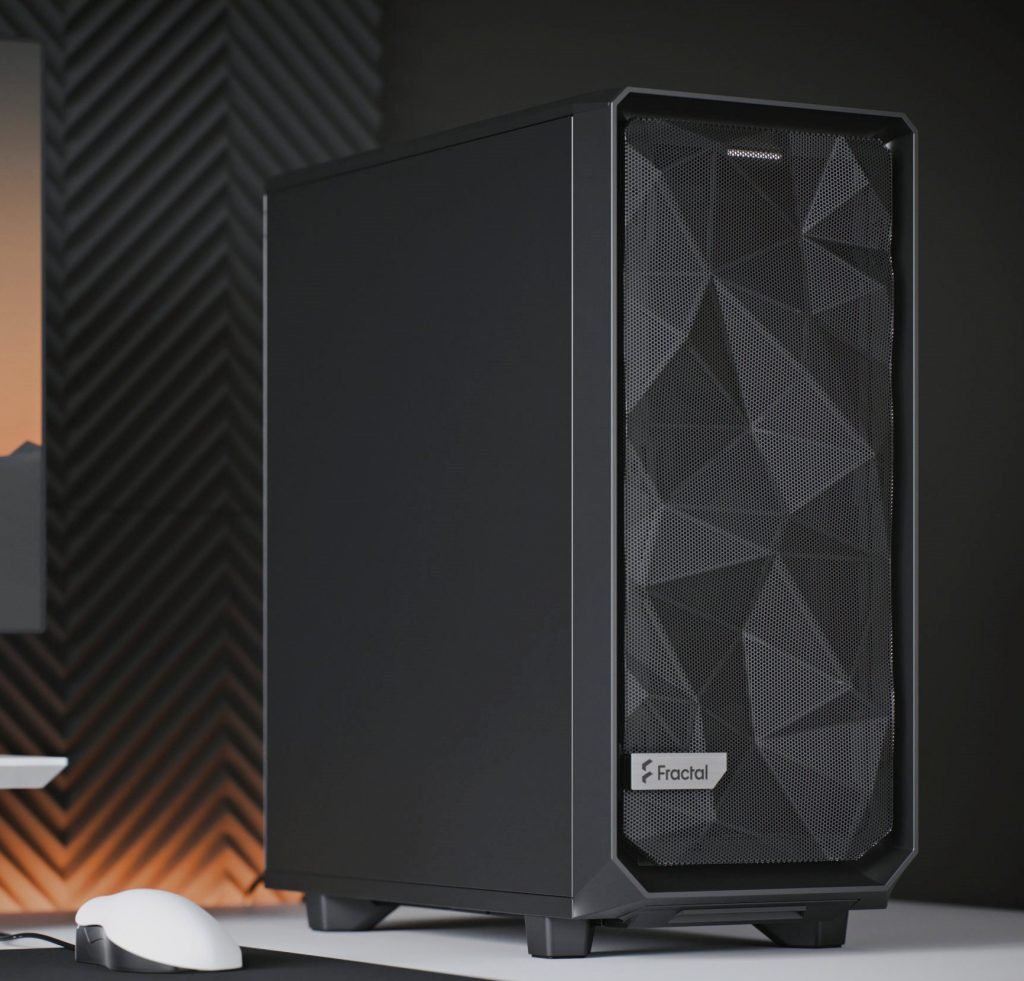

We haven’t seen a case this year that can take down Lian Li Lancool II Mesh, still a solid contender alongside the Lancool 215. It’s still a chart-topper and is one that’s on our list, and you should be considering.
However, If you are interested in something brand new, then Fractal Meshify 2 Compact has the best shot so far of challenging the Lancool II Mesh.
The Meshify 2 compact ships with 3 case fans, two 140mm intakes, and one 120mm exhaust which puts it far ahead of the original Meshify C in stock thermal tests.
GPU thermals weren’t as good as we hoped, but this can be at least partially addressed by shifting the intake fans slightly below their original position.
The limited size of the Meshify 2 Compact means that system compatibility is also limited but not more so than the original Meshify C, which is currently the top-selling case.
Ultimately, we will give this one to the Meshify 2 Compact, but the Lancool 2 Mesh gets an honorable mention.
The brand new compact has made big strides forward for Fractal, and it’s a case worthy of consideration for best out-of-the-box thermals.
However, if you don’t need your steel box to be fresh out of the factory, the Lancool 2 Mesh is still our primary choice. It’s just that it technically came out in 2020.
Best Noise Levels and Silence
This category focuses on the best noise levels. Counterintuitively, the best noise levels is one of our most opinion-based categories. We do take numbers and measurements for it, but if we judge based on raw numbers, the case with the fewest slowest fans will win.
Instead, we choose the quietest case that achieves reasonable levels of performance. Our noise normalized testing is helpful here, but it’s in a separate category about noise overall.
Corsair 5000D


This year one of the best cases in this respect is Corsair’s Non-Airflow 5000D. Test results skewed this case hot, especially for GPU thermals but not entirely out of control.
Standardized fan testing suggested that with some carefully arranged aftermarket fans, the 5000D could hold its own.
It has wide gaps between the front and top panel plates and the chassis fan mounts, allowing some airflow even when using solid steel or glass plates that ship with the 5000D or 5000X.
Given a choice, we do generally prefer the airflow model because you can tune the fan speed and achieve better overall performance, noise, or thermal.
But the solid panels undeniably reduce the noise levels a little. Still, you’re going to be sacrificing some of that thermal performance, and it’s more useful if you’re not going to tune it manually.
With the airflow panels, we measured 38 DBA, and with the solid panels, we measured 36.7 DBA.
Be Quiet! is always a contender in this category, but their silence-focused configurations with the 802, for example, tend to score very poorly in our thermal tests. The sealed 802 achieved 36.2 DBA, which is good, but it had worse CPU temperatures than the torture test.
Interestingly the Be Quiet! Sound Base 802 and the Corsair 5000D are in contention once again for the second category. It’s a matter of opinion, and some prefer the 5000D for the best noise levels combined with the best thermals, while I prefer the Be Quiet! Silent Base 802 for other qualities combined with acoustics.
However, if I were choosing purely on noise levels and didn’t want to tune anything manually, I would go for the 5000D. It depends on how you’re building.
Check out more options for Silent PC Cases.
Best Noise Normalized Thermals – Fractal Meshify 2

Best noise-normalized thermals is a category defined by a test that we added to our usual suite a couple of years ago. For our baseline torture test, we always run all case fans at 100% speed.
For the noise normalized benchmarks, we lower the speed of the case fans until we hit a 36 DBA threshold. The point of this test isn’t to see whether cases are silent but to see which cases can still provide good thermal performance without sounding like a hurricane.
Last year, we named the Fantax P500A the best case in this category and gave the best mechanical design award to the Meshify 2.
The P500A still has arguably the best balance of CPU and GPU thermals at a low noise level. Still, after adding more cases to our normalized noise charge, we think the Meshify 2 deserves some additional credit for keeping noise levels down while still having a true front filter.
Some of our favorite budget airflow cases do exceptionally well in this category, like the Lancool 215 and the P400A. This is because they have open fronts without filters blocking airflow, and their fans can quietly move a lot of air.
The Meshify 2 manages to achieve almost the same level of performance with a filter. It’s a good alternative for users who want the low noise levels of a case like the Lancool 215 or the P500A but want a higher degree of dust filtration.
Fractal, like Be Quiet! has a reputation for releasing noise-damped cases. These noise-damped cases tend to be hotter at a normalized noise level than comparable airflow cases in our testing since open case design allows fans to move more air even though they’re slower without sacrificing much performance.
For example, the Meshify 2 variant of the silence focused Define 7, which scored significantly worse than the Meshify 2 in noise normalized testing. Although. The Define 7 was below our noise threshold even at 100% fan speed.
This varies between systems, but with proper fan speed control, open cases like the Meshify 2 can achieve better cooling and lower noise than closed cases like the Defined 7.
Conclusion
So that’ll wrap it up, then there’s still a lot more of 2021 to go, but because people are building computers all the time throughout the year. We like to make these lists as we go.
